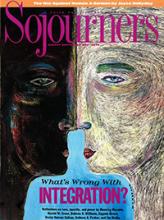AMERICA'S SOCIETY IS more thoroughly integrated today in terms of race relations than at any point in its entire history. Since 1964, the number of black elected officials has increased from hardy 100 to 7,000. The number of African Americans enrolled in colleges and universities has quadrupled; the number of black-owned banks and financial institutions has increased tenfold; the percentage of African Americans in the middle class and professions has significantly expanded.
Perhaps the most striking changes in public perceptions of race have occurred in popular culture, social institutions, and the media. American music, theater, public education, sports, and the arts are now heavily influenced by the rhythms and patterns of African-American life. Black images in commercial advertisements are commonplace. Blacks remain underrepresented in the ownership and management of cultural and social institutions, but are nearly omnipresent, its employees and prominent public representatives, particularly in the state sector.
Despite these symbols of racial advancement, in recent years incidents of racist harassment, vigilante violence, and social disruption have escalated. Hundreds of African-American students have been victimized by intimidation or outright threats on university campuses across the country. White youth are forming "while student unions" at several institutions to push back affirmative action and the preferential recruitment of minorities as faculty and students.
Read the Full Article
